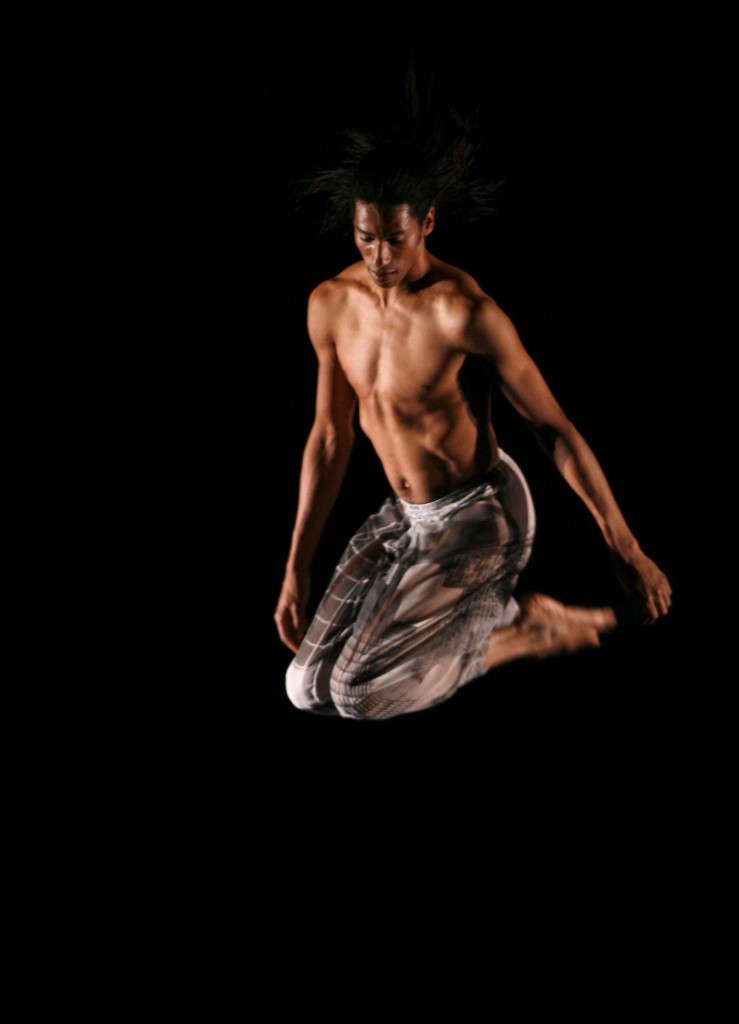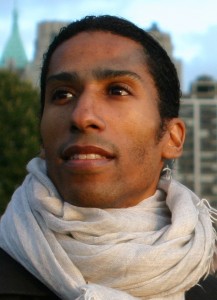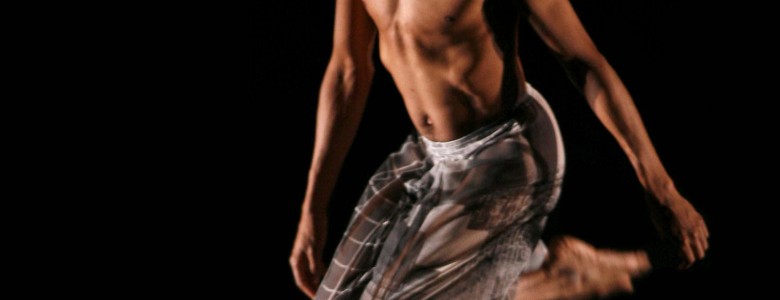“When I watched Trisha dance, be it on video archived early works or watching her do If you couldn’t see me from the wings, no matter what ‘form’ it was she was attempting, I saw how personal it was for her.”

Choreographer, dancer, and teacher Stacy Spence was a dancer in the Trisha Brown Dance Company from 1997 to 2006. He currently teaches classes and direct restaging projects for the company.
Q: What was your first encounter with Trisha Brown’s work?
Stacy Spence: I remember seeing just a short video clip of Set and Reset in college while in Denver, or maybe at the Colorado Dance Festival—someone showed a video around that time. I had never seen such a fluid way of moving and staging before and was immediately drawn to it. I had always felt like I was more of an individual kind of mover, and not so great at moving like I was suppose to in classes. Seeing that dancing struck a chord, it looked like unknown and individualistic movement to me. Having said that, I almost felt as if I knew that movement already. It was few years later, when I moved to New York, that someone suggested that I might be a good fit for Trisha’s work. The company was elusive during this time, they weren’t in town much, but they gave periodic workshops and I took one. That is where I got to connect my idea of the work from that short video clip to the actual physicality of the work.
Q: What were rehearsals like?
SS: I had danced with some independent choreographers project to project before joining the company. So working with a group day to day and getting to know and create with each other over a long time was something that I wanted to experience. We would usually work with Trisha on building new material, or work on learning and keeping up repertory.
Q: How did Trisha create work on the dancers?
SS: Depending on what was needed for the work, Trisha might ask a few of us to come in and be with her while she made new material. We would shadow her as she worked out ideas and distilled those ideas to what was essential. Then the conversation would begin, between what you saw her do and helping get it down, or she might be interested in where you might take that idea. At other times, she might throw out an idea and see how we interpret it and manifest that idea. I remember is being asked to move like the sound of a whistle, while we were making the Scherzo section in 5 Part Weather Invention. Things like that tickles a person’s creative spirit. I loved that improvisation was important in the making of work. Parts of all of us are in the repertory. Trisha’s genius directing of course, but I can also see Diane, Carolyn, Wil, Lance, Keith, Kathleen, Ming, Abby, Brandi, Cori, and all the other dancers I got to be with, all of them bubbling about, contributing to Trisha’s vision.
Q: If you had one Trisha Brown dance to take with you to a desert isle what would it be and why?
SS: Oh no, only one! I have always been so fond of For MG: The Movie. Something about the use of time in that piece, gives me space for imagining things happening beyond the piece. No, wait . . . Newark, to stay challenged. I can do this. Wait ,wait . . . Set and Reset, first thing I ever saw. I am cheating.
 Q: How did Trisha’s dances evolve during your time with the company?
Q: How did Trisha’s dances evolve during your time with the company?
SS: As I think on my experience of learning through the cycles of dances, I feel that ideas would keep being layered upon from the last pieces. So works I was part of would have elements from what was learned in previous cycles mixed into what was needed for forms in the current dance. When I joined the company, Trisha was well into the Music Cycle and making the opera L’Orfeo. So with music, there was the added complexity of Trisha’s choreographic structures and her choices with the musical structures of the composers.
All of this layering was challenging as a dancer, which is fantastic. We all have aspects that we are comfortable with, are good at, or naturally come to us. But that layering of complexity means you come up against aspects that may not be your strong suit, that you may not be as confident about being able to manifest. That is a challenge, but it is also exciting to meet that challenge.
Q: What stays with you the most about Trisha’s work today?
SS: Something that I have gleaned through dancing, teaching, and sharing Trisha’s work is an idea of: the simple in the complex and the complex in the simple. As I think of Trisha the person—when I watched Trisha dance, be it on video archived early works or watching her do If you couldn’t see me from the wings, no matter what “form” it was she was attempting, I saw how personal it was for her. I saw the person. I saw the human. That is what I carry with me and what I connect to most.
Photos: Stacy Spence dancing in Set and Reset (c) Naoya Ikegani Saitama Arts Foundation 2006. Photo of Stacy Spence courtesy of the artist.

